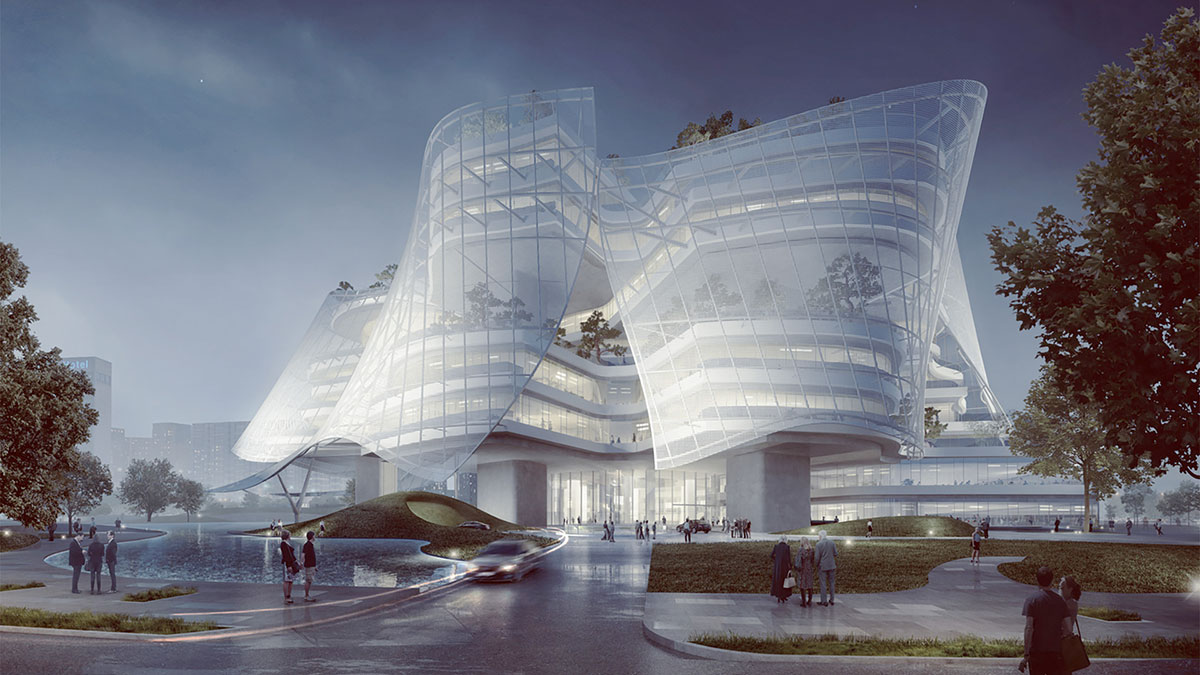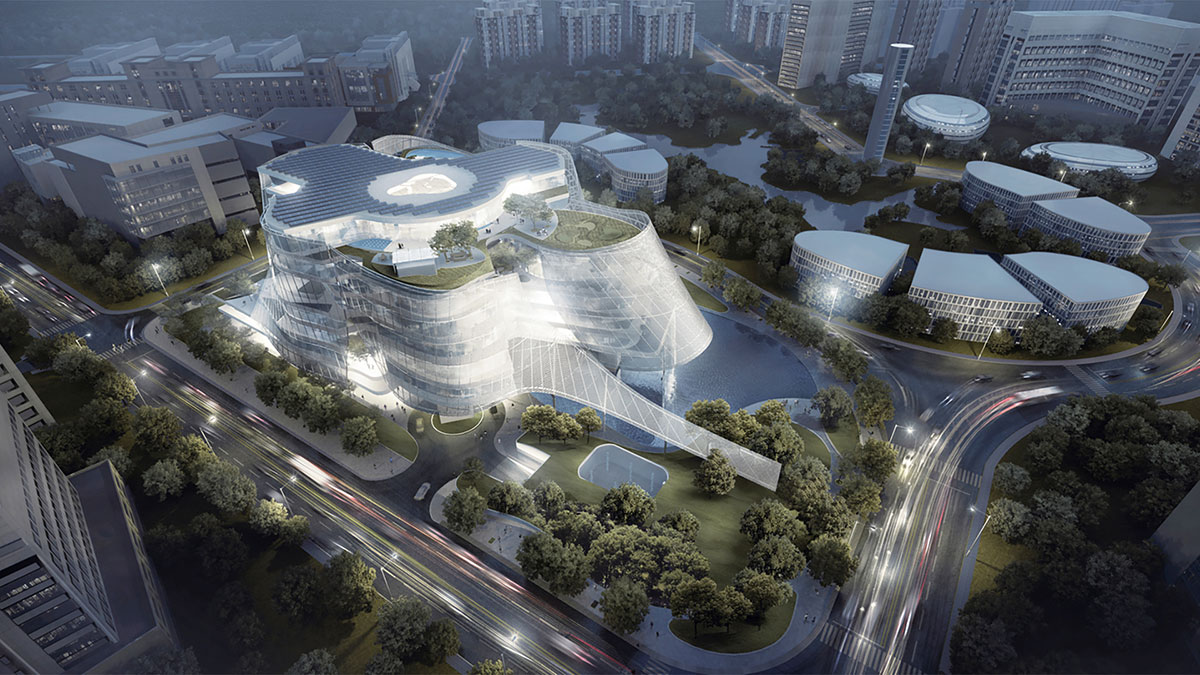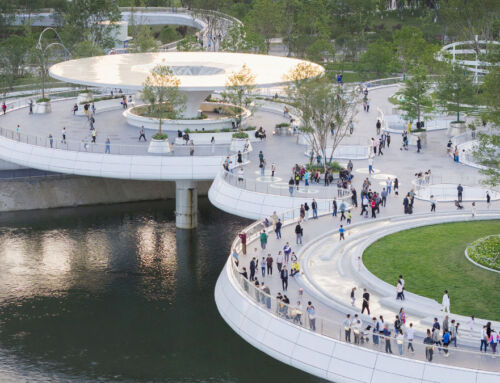Polytetrafluoroethylene (PTFE), popularised as Teflon®, has revolutionised contemporary architecture. It combines technical responsiveness with aesthetic expressiveness. Its extraordinary resistance to corrosion, UV rays and extreme weather conditions makes it virtually indestructible outdoors. In addition, it filters and diffuses light, which is another of its values in architecture.
In addition, it is hydrophobic and self-cleaning, with minimal maintenance even in polluted urban environments or coastal areas. In tensile membranes, lightweight roofs and textile enclosures, its flexibility and dimensional stability make it possible to create organic forms that would be impossible with conventional materials.
MAD Architects masterfully employs this material, Teflon, in the Xinhee Design Center in China. The office and vertical garden building, conceived as a star with intertwined arms, is wrapped in a PTFE skin that acts as a sophisticated air conditioning system.

The semi-transparent Teflon membrane filters direct sunlight, reduces interior heat load and promotes natural ventilation, all while projecting an ethereal, changing image depending on the time of day. Beyond its application in this iconic project, PTFE represents a recurring element in 21st century architecture.
After all, Teflon is the material expression of three principles: efficiency – because of its low maintenance and energy savings -, sustainability – because of its long life and recyclability – and aesthetics – because of its diffusive quality and formal plasticity.
By Tianshu Liu, Senior Architect in the Architecture Department at Amusement Logic
Imagenes: MAD Architects.






